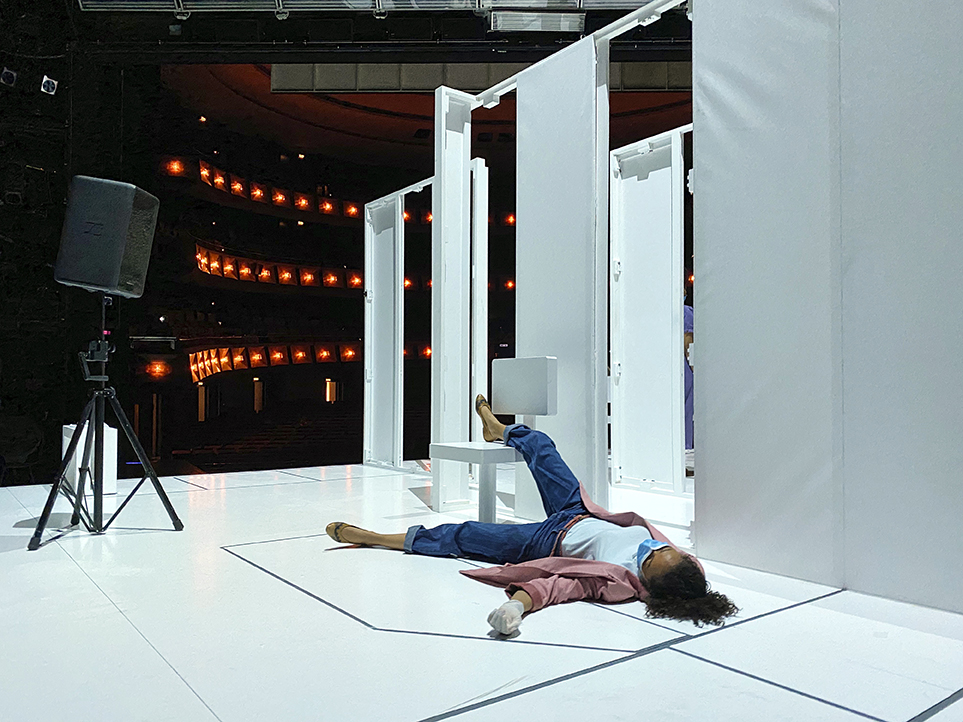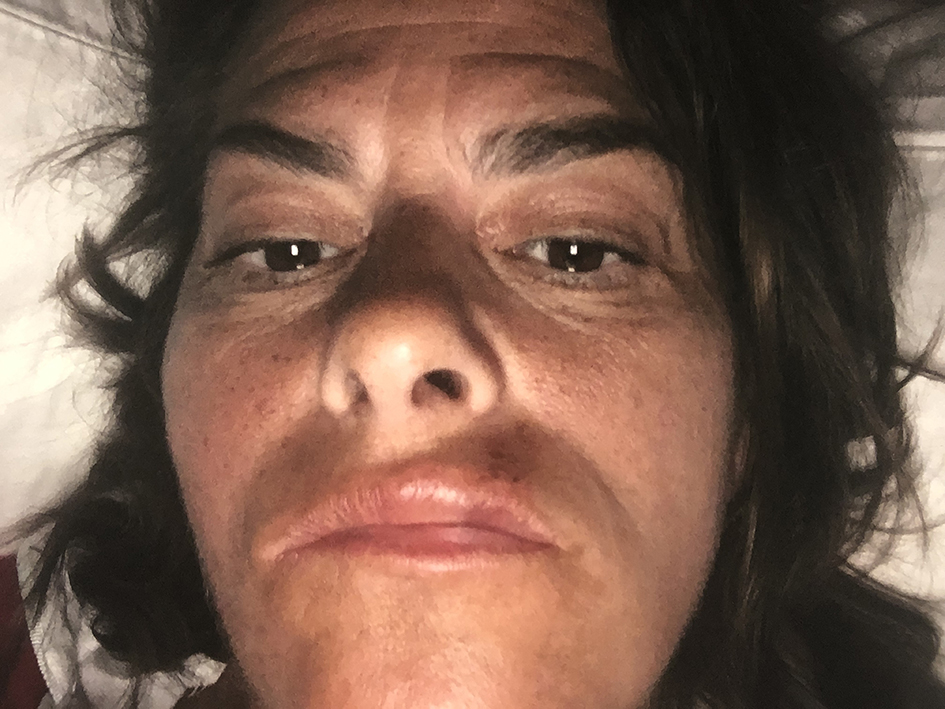
Art Julia Peyton-Jones Interview
Julia Peyton-Jones, the departing director of the Serpentine Galleries, looks back on her career with 200%. She discusses her first years at the gallery, conceiving the temporary pavilions, fundraising and her successful ‘art marriage’ with Hans Ulrich Obrist.
Julia Peyton-Jones started her artistic life as an artist for ten years. She was trained as a painter at the Royal College of Art. In 1988, she joined Hayward Gallery as a curator and became the director of the Serpentine Gallery in 1991.
Right from the beginning, Peyton-Jones, brought a curatorial direction to the Serpentine resulting in an exhibition programme of a balanced mix of popular and avant-garde shows. From the ‘Popeye Series’ by Jeff Koons to ‘The Dirty Words Pictures’ by Gilbert & George. From ‘The Maybe’ by Cornelia Parker (the actress Tilda Swinton asleep in a glass case) to the 512 Hours performance by Marina Abramovic, thereby turning the gallery space into a meditation centre.
Taking the step from a large institution, Hayward Gallery, to a smaller institution, the Serpentine Gallery, Peyton-Jones felt slightly embarrassed by the small exhibition space of the gallery. It created an awareness of how to use every square inch of the space and it triggered her sensibilities and love for architecture. At the end of the 1990s she conceived the annual architectural pavilion commission which gave the gallery a temporary new wing during the summer. In 2013, a second gallery space opened, the Serpentine Sackler Gallery, which was located in a 200-year old former gunpowder store.
An unmissable event on the art calendar would be the Serpentine Marathons organised during Frieze London. An eclectic mix of speakers ranging from artists and musicians, to architects and filmmakers delivering a presentation on the theme of the Marathon. “You learn things that are so surprising, interesting and engaging”, Peyton-Jones tells me. “I can barely go to the loo. I don’t want to leave my seat as I know I’m going to miss something”.
Until her last day Peyton-Jones’s agenda is filled with back to back appointments. “Forgive me for keeping such a close eye on the time”, she apologises after our conversation. “You would think as I am leaving I would have time and I could walk around and be completely relaxed – it is so not like that”. It will continue in this vein until Friday 8th of July, signifying her last day as the director of the Serpentine Galleries.
Thank you speech
200%: I attend many of openings of exhibitions and the list of people that the gallery thanks, feels a bit like an Oscar acceptance speech, too long and sometimes a bit obligatory. However when I attend the Serpentine openings, the atmosphere is always welcoming, warm and inclusive and the thank you speeches are heartfelt. Is that due to your personality?
Julia Peyton-Jones: If you run a non-profit organisation in this country we have to rely on many people who make our work here possible. [The Serpentine receives 17% of its annual operating income from Arts Council England]. Without our donors we have no programmes, we have no staff, we have no ability almost to turn on the light in the morning. My gratitude to this group who donate a large or small amount of money is really deeply felt. I’m really pleased to hear that our gratitude comes across in our speeches. Also, when somebody gives you something you say thank you. We are given money, help, support and assistance. It is only appropriate to say thank you in a way that seems real.
The first years
200%: Could you tell me what the period was like before Hans Ulrich Obrist joined the gallery in 2006?
JPJ: Hans Ulrich was part of the gallery in the early years because I asked him to curate a show ‘Take Me, I’m Yours’. So we have worked together for over 20 years. When I joined the gallery it had a very distinguished reputation. However, in the early 1990s, the art world then was very different from the art world today. It was less international, less in focus, less connected. I wanted the Serpentine to be connected globally, to be respected and do really excellent work. I wanted it to be on par with the institutions I admired.
200%: What institutions did you want to be on par with?
JPJ: They ranged from The Whitechapel Art Gallery under the direction of Nicholas Serota to The Mattress Factory in Pittsburgh. One of the things that was fascinating to me, when I came to work at the Serpentine Gallery, was having to live, if I can put it like this, on less and with less. I felt that my job was to create opportunities that weren’t immediately apparent. To do really wonderful work with very much less in every single sense, not only financially.
At that time there were many artists, emerging and household names, who had not had a show in a public institution. It was at a time when the YBA’s were coming into prominence and there was a growing appetite of interest by the British and international public. One of the elements I brought to the Serpentine from day one, was a curatorial direction for the institution. I worked on all the shows with Andrea Schlieker who was the deputy director at that time and the chief curators who succeeded her.
We asked Damien Hirst to curate a show called ‘Some Went Mad, Some Ran Away’. One of the pieces was vandalised and that produced a scandal associated with the exhibition. Installation by Robert Gober was an incredible exhibition. Agnes Martin, Man Ray, Jean-Michel Basquiat – they were wonderful shows to work on.
Art Marriage
200%: What makes your working relationship with Hans Ulrich such a successful art marriage?
JPJ: We have a mantra “Think the unthinkable”. It could be: “let’s turn it on its head, let’s look at it differently or let’s not do it”. Hans Ulrich is intellectually incredibly stimulating, engaging and playful. Also, we have an ability to speak our minds. We’re very honest in our approach.
200%: Are you always on the same page with each other?
JPJ: No, not always. In order to create a balanced view you have to have a number of different arguments and considerations. Sometimes in a discussion Hans Ulrich takes one position and I would take another. Our positions, though, are not fixed. It is not that he would always take this position, and I would always take that position, not at all. It moves around depending on what is under consideration.
The Pavilions
200%: When you started to work at the Serpentine, you felt slightly embarrassed that the gallery had a relatively small exhibition space?
JPJ: Yes, but now I love the idea of smallness. When you are small you have to recreate the space for each exhibition and take risks. When people come to our shows it can’t be the same building every time. It has to look different, it has to feel different, and you have to tailor-make the space for every show. Fortunately the space of the Serpentine Gallery is extraordinarily flexible. We can move the entrances to the rooms, we can create different routes and open the doors to the park.
200%: You initiated the successful pavilion programme in 2000 that gave architects their first opportunity to build in the UK. How did the idea of the pavilion come about?
JPJ: At the end of 1990s we were exposed. Our patron, Diana, Princess of Wales, had died and the sponsor of our Gala dinners, Vanity Fair, had ceased to support us. They felt that their support was for fundraising in order to renovate the gallery. So we were left without our patron and our sponsor. The answer was to do something that was so fundamentally different to anything we had done before and I wanted the pavilion to be the sign post to the future.
The commissioning of Zaha Hadid to design the first pavilion was a statement about the Serpentine’s values and vision on the occasion of the thirtieth anniversary of the institution in 2000. Zaha’s choice was very specific and particular. She designed a beautiful structure. The Royal Parks gave us permission to keep the structure up for one night, but the Cultural Secretary at the time, agreed that it could stay up longer. That was the launch of the pavilion series. Building a pavilion was like building a new wing [of the Serpentine] every year.
200%: How did the idea came about to expand the pavilion programme with four summer houses?
JPJ: I wanted to communicate to the public that the Serpentine is ambitious. It is growing, it is looking to the future. it is not static, it is not resting and it is going forward. Since 2000, we have completed 15 Pavilions and I felt there needed to be a new signpost for the future. It is not that the pavilion is not enough on its own. The intention was always to explore the idea of an exhibition of architecture in a constructed form by a number of architects.
200%: The lists of trustees printed on the gallery wall of the Sackler building is incredibly impressive. Could you talk about your relationship with the board?
JPJ: I credit the board of trustees of the Serpentine, together with the team and the wonderful artists, architects and designers we have worked with as the reason for the success of the gallery. Without the board we wouldn’t be able to do the work that we have done. They allowed us, responsibly, to take incredible risks. I have always had a very transparent relationship with the board and if there was a problem it would always be discussed at board level. The pavilion has no budget, therefore we have to raise all the money ourselves. Part of the financial plan is the purchase of the structure and each year there is only one person who wants to buy it. That is a high risk strategy. If the board had a more nervous disposition they may not have taken on this challenge. However, they did and this programme has survived, blossomed and developed. They have been extraordinarily supportive.
The pavilion has no budget, we have to raise all the money ourselves. Part of the financial plan is the purchase of the structure and each year there is only one person who wants to buy it. That is a high risk strategy.
200%: Do you enjoy fundraising?
JPJ: I like the Serpentine to have the best programme it possibly can have. Fundraising is essential for the realisation of that programme. It is not a question of liking or not liking it. It is essential for our work. If we don’t want to fundraise, we have to live within our grant which is £1,5 million each year and that is fine. But it would be a different organisation.
200%: You have dedicated your life and career to art. Could you explain what made it so gratifying?
JPJ: Leaving after 25 years gives me an opportunity to reflect… what if. The answer is that I didn’t have other opportunities I chose this one. It has given me privileges, it has allowed me to learn, allowed me to explore and allowed me to develop in ways I couldn’t possibly have imagined in 1991. I only have gratitude for the experience that I have had.
 Julia Peyton-Jones’s future plans
Julia Peyton-Jones’s future plans
What is Julia Peyton-Jones going to do now? Unexpectedly, it was revealed at the opening of the Alex Katz and Etel Adnan exhibitions. Peyton-Jones expressed her heartfelt gratitude to the artists and her speech was personal and retrospective (“It has been a privilege to see the world through the eyes of artists”). Also she took the opportunity to thank her close collaborator Hans Ulrich Obrist: “I’m immensely grateful to have worked the last ten years with Hans Ulrich”. As she became overwhelmed by her emotions she stopped. The silence in the room was broken by a member of the audience exclaiming: “Let’s give a big round of applause for Julia!” After collecting herself she referred to their mantra ‘Think the Unthinkable’. “Hans Ulrich was brave enough to do things with me that I couldn’t have done on my own.”
Obrist started his speech by saying that much of their speeches were not scripted and revealed what Peyton-Jones was going to do next. “The news has been leaked as to what Julia is going to do after she steps down at the Serpentine Gallery. She has dedicated 25 years of her life to work for other artists, but now, she is going to return to her art practice”.
Interview written and conducted by Thierry Somers.
Photo: Greg Funnell ©, 2013 Copyright Dezeen www.dezeen.com










